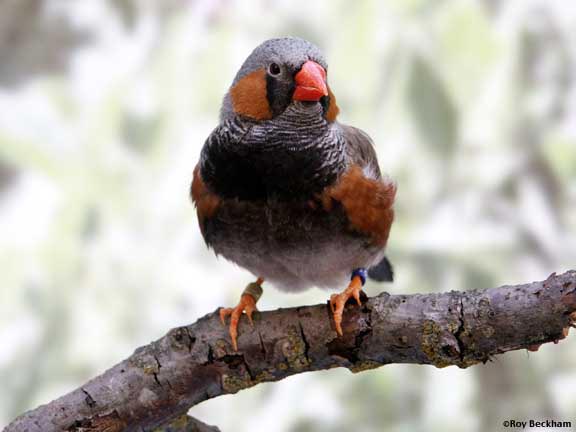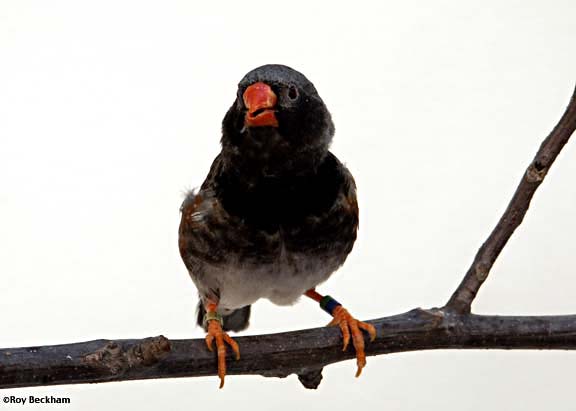




 |
|
|||||||||||||||||||||
 |
|
|
|
|
|
|
|
|
|
|||||||||||||
|
|
|
|
|
|
||||||||||||||||||
|
|
|
|
|
|
|
|
|
|
||||||||||||||
|
|
|
|
|
|
||||||||||||||||||
|
|
|
|
|
|
|
|
|
|
||||||||||||||
|
|
|
|
|
|
||||||||||||||||||
|
|
|
|
|
|
|
 |
|
|||||||||||||||
 |
 |
|
||||||||||||||||||||
|
|
|
|
||||||||||||||||||||
|
|
|
|
|
|
|
|
|
|
|
|
|
|
|
|
|
|
|
|
|
|
|
|
| Black Face Zebra Finch | ||||||
 |
||||||
| Black Face Zebra finch male | ||||||
|
Mutation Effects Male: The space between the tear mark and the beak (lores) is changed from white to black and the breast bar is extended towards the vent making the underside of the male black. The extent of the black is variable. The flanks have a tendency to lose the spots, but this is not so in all cases. The tail coverts also carry more black. The white bars are more narrow. Female: Black Face females have only subtle differences from normal hens and are easily passed over. The white between the tear mark and the beak is gray instead of buff white and there is often an extension of gray down from the breast. The tail bars are similar to males. because of these subtle marks, it can sometimes be difficult to distinguish BF hens from normals and the problem is exacerbated in other colors like fawn and CFW. Combinations The Australians also have an extremely dark version where the black extends from breast to tail. These are often referred to as Black Bodied, but these are still genetically a BF Zebra, not a new mutation. These birds were achieved through multiple BF x BF crosses. Some Australians have told me that if you mate a Black Bodied Zebra to a normal, the result is a Black Face rather than Black Bodied. The Black Face mutation does conflict with the Florida Fancy mutation in that the BF extends the black areas while the Florida Fancy mutation is suppressing the black. They are still often combined because once these two mutation are then combined with the Orange Breasted mutation, the results are a striking bird with lots of orange on a white base. The Black Face mutation probably conflicts with the Penguin mutation. I would expect the Penguin mutation to suppress all of the features of the Black Face Zebra. Black Face Fawn Cheek (click to view) Notes There is a condition known as melanism that causes usually white areas on a bird to change to black. Melanistic males will look very much like Black Face males, but melanistic females are also black unlike Black Face females which are gray. These black areas are often quite blotchy and are not the even black seen in Black Face Zebras. While the BF mutation is genetically controlled, melanism seems to be a metabolic malfunction, possibly having something to do with the liver. (Melanistic female and another shot. Close up of belly Notice the blotchy coloration. This is the worst case of melanism I have ever seen. I sold this normal female to a pet shop a year or so earlier. I brought her back home to see if I could reverse the melanism.) |

Black Face Black Breasted Black Cheek male
